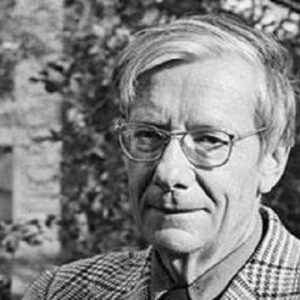Nicolaas Bloembergen is a Dutch-American physicist who shared the 1981 Nobel Prize in Physics for his pioneering work on the spectroscopic study of electromagnetic radiation’s interaction with matter. He pioneered the use of lasers in his studies and made substantial contributions to the field of nuclear quadrupole interactions in alloys and defective ionic crystals. Born in the Netherlands into a large family, he developed an early interest in science as a result of the intellectually stimulating environment in which he grew up. His grandpa was a high school administrator with a Ph.D. in mathematical physics, which the little child inherited. He enrolled at the University of Utrecht as a young man to study physics but the university was closed during World War II. He subsequently moved to the United States to pursue further education and eventually lived there. His earliest research focused on nuclear magnetic resonance, which introduced him to masers. He then built a three-stage crystal maser and contributed significantly to the creation of laser spectroscopy, a technique that enables high-precision measurements of atomic structure. It was ultimately his work in nonlinear optics that contributed to his Nobel Prize triumph.
Childhood & Adolescence
Nicolaas Bloembergen was born in Dordrecht, Netherlands, on March 11, 1920, as one of six children of Auke Bloembergen and Sophia Maria Quint. His father, a chemical engineer, worked for a chemical fertilizer firm as an executive. His mother was an intelligent woman who opted to devote her energies to raising her family. His maternal grandfather was a high school principal and mathematician with a Ph.D.
As a 12-year-old, Nicolaas Bloembergen enrolled in the municipal gymnasium in Utrecht and developed an interest in science, particularly physics, as a teenager.
Bloembergen enrolled at the University of Utrecht in 1938 to study physics. He flourished there under the tutelage of Professor L.S. Ornstein, who noticed the youngster’s talent and provided him with numerous opportunities to expand his knowledge and experience.
His pleasant undergraduate years were challenged in the early 1940s by the increasingly turbulent political situation in Europe as World War II raged on. In 1940, Germany invaded the Netherlands, and his beloved professor Ornstein was dismissed from the institution in 1941. Bloembergen was able to continue his studies and get the degree of Phil. Drs., the equivalent of an M.Sc., before the Nazis dissolved the university in 1943.
The next two years were a nightmare for the young man, who spent his days hidden indoors, surviving on whatever he could find to eat. Regardless of the obstacles, he continued reading books by the light of a storm lamp.
By the end of World War II, Europe had been utterly destroyed. Thus, Bloembergen departed the war-torn Netherlands in 1945 to pursue graduate studies at Harvard University under the tutelage of Professor Edward Mills Purcell.
Purcell and his graduate students Torrey and Pound discovered nuclear magnetic resonance shortly before they arrived at Harvard. Bloembergen assisted the team in creating an early NMR apparatus upon his arrival. He also conducted research on the nuclear spin relaxation mechanism in metals and in ionic crystals using conduction electrons and paramagnetic impurities.
He returned to the Netherlands in 1948 to earn a Ph.D. from Leiden University with a thesis titled ‘Nuclear Magnetic Relaxation’ before returning to Harvard.
Nicolaas Bloembergen’s Career
In 1949, Nicolaas Bloembergen was elected a Junior Fellow of the Harvard Society of Fellows. He was appointed Associate Professor in 1951. He was appointed Gordon McKay Professor of Applied Physics in 1957, a position he held until 1980.
His early work focused on nuclear magnetic resonance. He researched nuclear quadrupole interactions in alloys and defective ionic crystals early in his career and gained an understanding of scalar and tensor indirect nuclear spin-spin coupling in metals and insulators.
His study was essential in his team’s microwave spectroscopy investigations, which resulted in the development of a crystal maser in 1956. He invented the three-stage crystal maser, which became the world’s most frequently used microwave amplifier.
He has made significant contributions to the science of laser spectroscopy, which enables precise measurements of atomic structure. His work in this field eventually resulted in the formulation of nonlinear optics, a novel theoretical approach to the investigation of electromagnetic radiation’s interactions with matter.
From 1974 to 1980, he was the Rumford Professor of Physics, and in 1980, he was named the Gerhard Gade University Professor. He left Harvard in 1990.
He began lecturing at the University of Arizona in 2001, where he continued his research in nonlinear optics, focusing on the interactions of picosecond and femtosecond laser pulses with condensed matter, as well as collision-induced optical coherences.
His Significant Works
Nicolaas Bloembergen, a world-renowned expert in laser spectroscopy, is credited with creating a technology that enables high-precision studies of atomic structure. Additionally, he invented a three-stage crystal maser, which became the world’s most frequently used microwave amplifier.
Awards and Accomplishments
In 1978, he was given the Lorentz Medal.
Nicolaas Bloembergen and Arthur Leonard Schawlow shared the 1981 Nobel Prize in Physics for “their contributions to the invention of laser spectroscopy.” The remaining half was awarded to Kai M. Siegbahn “in recognition of his contributions to the development of high-resolution electron spectroscopy.”
Bloembergen has also received numerous other notable honors, including the Oliver E. Buckley Condensed Matter Prize (1958), the Stuart Ballantine Medal (1961), the IEEE Medal of Honor (1983), and the Dirac Medal (1983). (1983).
Personal History and Legacies
In 1950, he married Huberta Deliana Brink. His wife, a pianist, and artist is a mother of three.
Estimated Net worth
Unknown.


